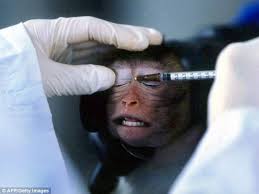These statistics are from the year 2014 where it was recorded that more than 100 million animals, including mice, rats, frogs, dogs, cats, rabbits, hamsters, guinea pigs, monkeys, fish, and birds, were used in experiments in the U.S. alone. Canada had a much lower figure of 3 million animals being tested on per year while the U.K used 4. 87 million animals. Australia and New Zealand, recorded more than six million animals used in teaching and/or research. However, there are places such as Japan where the number of animals used do not have to be recorded.
These animals are forcefully placed in laboratories to participate in biology lessons, medical training, curiosity-driven experimentation and tests for the purpose of chemical, drug, food and cosmetic products. These animals face harmful and cruel practices during these tests and research experiments. Some examples of these practices include breathing toxic fumes, being restrained and immobilised for a long period of time, holes drilled into their skulls, spinal cords crushed, skin burned off and severe eye damage or blinding using direct toxic substances. In addition to the torment occurring in the actual experiments, animals in laboratories are confined to barren cages, socially isolated as well as physically and psychologically traumatised.

